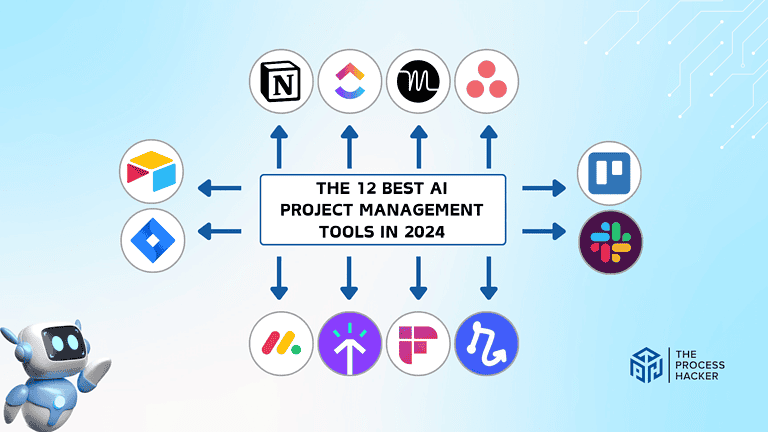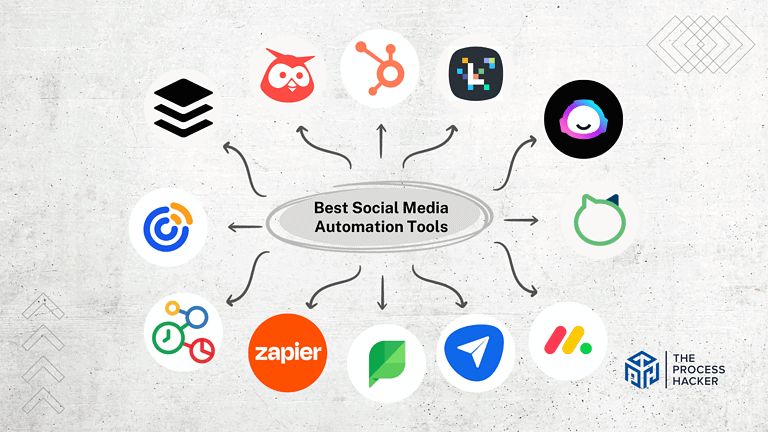10 Proven Strategies for Ecommerce Business Growth
Did you know that 80% of shoppers are likelier to buy from a brand that provides personalized experiences? That’s the power of understanding your new and existing customers and tailoring your approach to their needs.
Imagine harnessing the power of advanced analytics to deeply understand your customers’ needs or using AI-driven tools to personalize every customer interaction. These strategies aren’t just theories—they are actionable plans leading e-commerce giants are already implementing to capture and captivate their markets.
The global e-commerce market is projected to hit over $6 trillion by 2024. With such staggering growth potential, can you afford not to adopt these cutting-edge strategies? Let’s explore how you can claim your slice of this colossal market.
What is Ecommerce Business Growth?
Ecommerce business growth refers to expanding and scaling online business operations to increase market share, revenue, and profitability. This growth can manifest through various channels, such as increased sales, broader product offerings, and enhanced customer reach. It’s about pushing beyond limits to tap into new customer bases and markets, leveraging the internet as a pivotal tool for business success.
In the fast-paced world of digital commerce, staying static means falling behind. Continuous growth is vital to maintaining competitiveness and relevance in an environment where consumer behaviors and technologies evolve constantly. By focusing on growth, you ensure that your business remains at the forefront, adapting to changes and seizing opportunities.
To track and drive e-commerce growth effectively, you need to focus on key metrics that provide insights into your business performance. These include:
- Revenue Growth: Tracking sales performance over time to assess financial progress.
- Customer Acquisition Costs (CAC): Measuring the cost-effectiveness of marketing campaigns in attracting new customers.
- Customer Lifetime Value (CLV): Estimating the total revenue a business can expect from a single customer throughout their relationship.
- Conversion Rates: Analyzing the percentage of visitors who complete a desired action, helping gauge the effectiveness of sales funnels and marketing strategies.
- Traffic Growth: Monitoring the number of visitors to your site is a primary indicator of brand awareness and market reach.
By understanding and optimizing these metrics, you can steer your e-commerce business more accurately toward sustained growth and success.
Why You Should Focus on Growing Your Ecommerce Business
In today’s digital age, the growth of your ecommerce business isn’t just a goal; it’s a necessity. Here’s why you should place a strong emphasis on expanding your online operations:
1) Stay Competitive in a Rapidly Evolving Industry
The e-commerce landscape is changing faster than ever before. Technologies evolve, consumer expectations rise, and new competitors emerge constantly.
To keep up, you need to grow—not just to thrive but to survive. Staying ahead requires innovation, agility, and a proactive approach to business strategy.
2) Increase Revenue and Profitability
At its core, business growth directly correlates to financial health. Expanding your operations and refining your marketing strategies can boost sales and, by extension, profitability.
This isn’t just about selling more but selling smarter—optimizing your pricing strategies, improving customer experience, and maximizing efficiency across operations.
3) Expand Your Customer Base and Market Reach
Growth means reaching new markets and diversifying your customer base. Whether exploring international markets or tapping into new demographic segments, expanding your reach can dramatically increase your potential customer pool. Remember, the more customers you reach, the greater your chances of boosting sales.
4) Build a Sustainable and Scalable Business Model
Finally, focusing on growth helps you build a business that’s successful today and sustainable in the long run. Scalability is key in e-commerce; you want a business model that grows without proportionally increasing your costs.
This involves investing in scalable technologies, streamlining your supply chain, and automating processes to handle increased demand without compromising quality or customer satisfaction.
How to Grow an Ecommerce Business: 10 Proven Strategies for 2024
These ten proven strategies will accelerate your growth in 2024 and beyond. From harnessing the power of AI to building a loyal community, we’ll cover the essential tactics to elevate your online store to new heights.
1. Leverage AI and Machine Learning for Enhanced Customer Experiences
AI and machine learning are revolutionizing the ecommerce landscape, and you don’t want to miss out.
- Implement AI-powered product recommendations: Suggest relevant products based on individual browsing and purchase history. This boosts customer engagement and increases the chances of additional sales.
- Use chatbots for 24/7 customer support: Respond instantly to customer inquiries outside business hours. This improves customer satisfaction and frees your team to focus on other tasks.
- Personalize user experiences: Tailor website content, product recommendations, and email marketing campaigns to individual preferences. This creates a more relevant and engaging experience, fostering customer loyalty.
- Optimize pricing strategies: Use AI algorithms to analyze market trends and competitor pricing. This enables you to adjust your prices to maximize profits and stay competitive dynamically.
Incorporating AI into your strategy’ll deliver more personalized and efficient experiences, ultimately driving higher conversions and customer satisfaction.
2. Optimize Your Online Store for Mobile-First Shopping
Mobile commerce is booming, and your e-commerce store needs to be ready. Prioritize a seamless mobile experience to capture this growing market segment.
Your website should adapt flawlessly to any screen size, from smartphones to tablets. This guarantees a consistent and user-friendly experience for all visitors.
Streamline the mobile checkout process. Minimize steps and eliminate friction during checkout. Offer mobile payment options and simplify form fields for effortless transactions.
Implement mobile-specific features by incorporating touch-friendly navigation and large buttons to enhance usability on smaller screens.
Optimize page load speed for mobile users. Slow loading times lead to frustration and abandoned carts. Optimize images and code to ensure fast loading, even on slower mobile connections.
3. Implement a Data-Driven SEO Strategy
A robust, data-driven SEO strategy is essential to ensure your e-commerce site stands out in a crowded digital marketplace.
Conduct Thorough Keyword Research
Start by identifying the keywords potential customers use to find products like yours. Tools such as Google Keyword Planner can help you uncover these insights. Focus on high-volume and long-tail keywords that capture more specific, purchase-intent traffic.
Optimize Product Descriptions and Meta Tags
Each product on your site offers a unique opportunity to rank in search engines. Optimize your product descriptions with keywords without sacrificing readability or customer engagement. Similarly, ensure your meta titles and descriptions are compelling and include primary keywords to improve click-through rates from search engine results pages.
Create High-Quality, SEO-Friendly Content
Develop content that engages readers and appeals to search engines. This could be through blog posts, buying guides, or how-to articles related to your products. High-quality content helps establish your site as an authority in your niche, which can improve rankings and drive organic traffic.
Build Quality Backlinks to Improve Domain Authority
Backlinks are a critical component of search engine optimization success. Focus on earning high-quality backlinks from reputable sites in your industry by sharing insightful content, participating in industry forums, or collaborating with influencers. These backlinks can significantly boost your site’s domain authority, leading to better overall search engine rankings.
4. Harness the Power of Social Media Marketing
Social media is a powerful tool for connecting with your audience and driving e-commerce growth.
To maximize your social presence, develop a consistent brand voice across all platforms, reinforcing a successful e-commerce brand image and fostering recognition. Create captivating visuals, informative videos, and thought-provoking posts that resonate with your target audience, encouraging them to share and expand your reach. Utilize user-generated content like customer testimonials, reviews, and photos featuring your products to build social proof and credibility, encouraging others to purchase.
Leverage social commerce features to enable seamless shopping experiences directly within social media platforms, making it easy for users to discover and purchase your products without leaving their favorite apps.
Engaging with your audience on social media will cultivate a loyal following, drive traffic to your website, and ultimately increase e-commerce sales.
5. Provide Excellent Customer Service
Exceptional customer service is paramount in the e-commerce world. It fosters trust, loyalty, and positive word-of-mouth. Ensure you offer multiple support channels like email, phone, and live chat, making it easy for customers to reach out with any questions or concerns. Implement a clear and hassle-free return and refund policy to instill confidence in shoppers.
Train your team in customer service best practices, emphasizing empathy, responsiveness, and problem-solving skills. Actively seek and utilize customer feedback to continuously identify areas for improvement, ensuring your service consistently exceeds expectations.
6. Expand Your Product Line Strategically
Expanding your product line strategically is a key driver of e-commerce growth. Stay ahead by analyzing market trends and identifying gaps in customer demand.
Dropshipping is a low-risk way to test new products and gauge their popularity before investing heavily in inventory.
Explore developing private-label or white-label products to differentiate yourself and gain more control over your brand.
Collaborate with complementary brands to offer bundled products or cross-promote each other’s offerings, tapping into new customer bases and expanding your reach.
7. Implement Email Marketing Automation
Email marketing remains a powerful tool for nurturing customer relationships and driving sales. To maximize its effectiveness, segment your email list based on demographics, interests, and purchase behavior. This will enable you to send highly targeted campaigns that resonate with each segment.
Create personalized email sequences that guide customers through their journey, from welcome emails to post-purchase follow-ups. Implement abandoned cart reminders to gently nudge customers back to complete their purchases, recovering potentially lost sales.
Develop a loyalty program that rewards repeat customers with exclusive discounts, early access to new products, or special offers. This will foster long-term engagement and boost customer lifetime value.
8. Optimize Your Sales Funnel and Conversion Rate
Optimizing your sales funnel and conversion rate is crucial for maximizing the effectiveness of your ecommerce efforts. To achieve this, conduct regular A/B testing on various elements of your website, such as headlines, calls to action, and product page layouts, to identify the most effective versions.
Simplify the checkout process as much as possible, eliminating any unnecessary steps or distractions that may lead to cart abandonment. Utilize exit-intent popups to offer discounts or incentives to customers about to leave your site without purchasing.
Implement trust signals throughout your website, such as customer reviews, security badges, and clear shipping and return policies, to reassure visitors and boost their confidence in your brand.
9. Explore Omnichannel Selling Opportunities
Explore omnichannel selling opportunities to expand your reach and sales potential. List your products on popular marketplaces like Amazon and eBay to reach their massive customer bases.
If feasible, consider opening a brick-and-mortar location to offer a tangible shopping experience and connect with customers in person. Integrate your online and offline sales channels, ensuring inventory and customer data are synchronized across all platforms.
Above all, strive to provide a seamless customer experience across all touchpoints, whether someone interacts with you online, in-store, or through social media, to foster brand loyalty and drive repeat business.
10. Invest in Influencer Marketing and Partnerships
Influencer marketing remains a powerful tool for expanding your e-commerce business by leveraging the credibility and audience of influencers in your niche. Here’s how you can effectively implement this strategy:
Identify Influencers Relevant to Your Niche
Start by researching influencers who align with your brand’s values and have access to your target audience. These can range from micro-influencers with a highly engaged following to major influencers with a broader reach. Tools like BuzzSumo or Upfluence can help you discover and evaluate potential influencers for your brand.
Develop Mutually Beneficial Partnership Agreements
Craft partnership agreements that provide value to both your business and the influencers. This might include commissions on sales, free products, or fixed payments. Clear communication about expectations and deliverables from both sides is crucial to fostering a long-term relationship that benefits both parties.
Create Unique Discount Codes for Influencers
Provide influencers with unique discount codes they can offer to their followers. This will not only incentivize purchases but also allow you to track the effectiveness of individual influencer campaigns. These codes can be compelling calls to action that drive both engagement and sales.
Measure and Analyze the ROI of Influencer Campaigns
To determine the effectiveness of your influencer partnerships, meticulously track campaign performance. Analyze metrics such as engagement rates, traffic generated from influencer links, and conversion rates from provided discount codes. This data will help refine your approach, ensuring you invest in partnerships that yield the best returns.
By strategically investing in influencer marketing and building strong partnerships, you can significantly amplify your brand’s visibility, credibility, and sales in ecommerce.
Key Considerations for Successfully Growing Your Ecommerce Business
Growing your ecommerce business isn’t just about implementing new strategies; it’s about understanding and integrating core principles that sustain long-term growth. Here are some key considerations:
The digital marketplace is always evolving, and so should your strategies. Learning about new technologies, market trends, and consumer behaviors is essential. Adapting to these changes helps you stay competitive and positions you as a forward-thinking leader in your space.
As you expand, it’s crucial to maintain sustainable practices that support long-term business health. This includes everything from ethical sourcing and eco-friendly packaging to efficient logistics. Sustainable practices appeal to a growing segment of eco-conscious consumers and contribute to a more resilient business model.
Your brand values are your compass in the vast sea of e-commerce business. As you scale, ensure every new step or marketing strategy aligns with these values. This consistency builds customer trust and loyalty, which is crucial for sustained growth.
Taking it to the Next Level: How to Scale Your Ecommerce Empire
Going global can dramatically increase your customer base. However, success in international markets requires more than just making your products available. It involves localizing your content, understanding regional market nuances, and complying with local regulations and cultural preferences.
Utilize advanced analytics to gain deeper insights into every aspect of your business—from customer behavior to supply chain efficiency. Business intelligence tools can help you make data-driven decisions that streamline operations and enhance customer experiences.
Mergers and acquisitions can be a fast track to growth, allowing you to expand your market reach quickly, acquire new customer bases, and integrate new technologies. However, this strategy requires careful planning and due diligence to ensure it aligns with your long-term goals.
Alternatives to Traditional Ecommerce Growth Strategies
Introducing a subscription model can provide a steady revenue stream and foster customer loyalty. Whether a product refill subscription or a premium content service, this model encourages repeat business and can smooth out revenue fluctuations.
Creating or joining a specialized marketplace can expose your products to a broader audience. This approach can be particularly effective if your products fit a specific niche that benefits from targeted marketing metrics.
Expanding into B2B ecommerce opens up new revenue channels. Selling directly to other ecommerce businesses often involves larger order volumes and repeat business, making it a lucrative growth area.
Final Thoughts on Ecommerce Business Growth
As we look toward the future of ecommerce, the potential for business growth is vast and filled with opportunities. Embracing innovative strategies such as leveraging AI, diving into data-driven SEO, and exploring international markets is key to surviving and thriving in the digital landscape.
However, the true essence of sustainable growth lies in balancing these advancements with core principles like continuous learning, ethical practices, and maintaining brand integrity. By integrating these elements, your ecommerce venture can evolve dynamically, responding adeptly to changing market conditions and consumer expectations.
Remember, the path to scaling your e-commerce empire isn’t just about rapid expansion but about building a resilient, adaptable business that grows with intention and purpose. Let 2024 be the year your e-commerce business grows and sets new benchmarks in innovation and sustainability.







